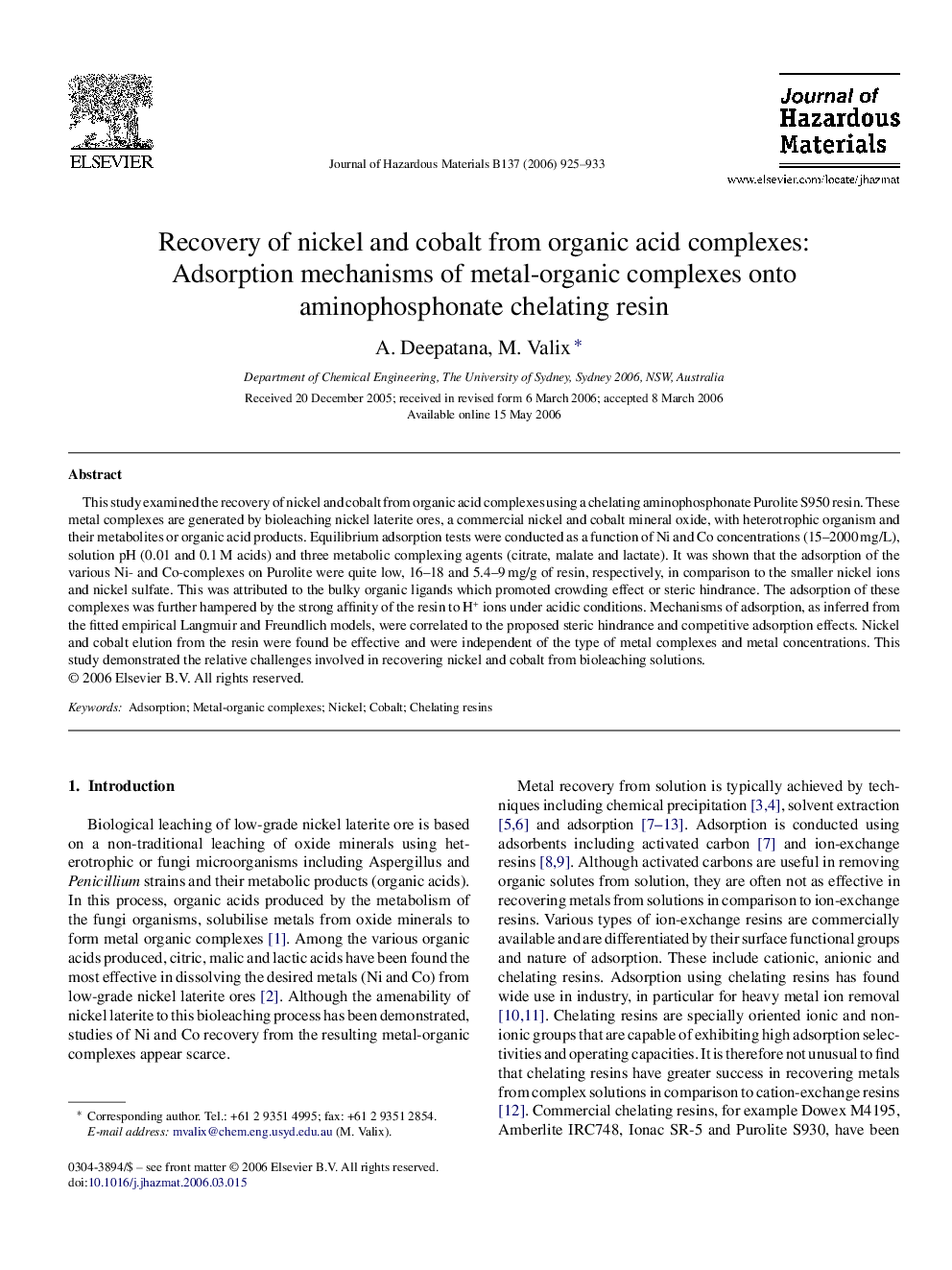| Article ID | Journal | Published Year | Pages | File Type |
|---|---|---|---|---|
| 585336 | Journal of Hazardous Materials | 2006 | 9 Pages |
Abstract
This study examined the recovery of nickel and cobalt from organic acid complexes using a chelating aminophosphonate Purolite S950 resin. These metal complexes are generated by bioleaching nickel laterite ores, a commercial nickel and cobalt mineral oxide, with heterotrophic organism and their metabolites or organic acid products. Equilibrium adsorption tests were conducted as a function of Ni and Co concentrations (15-2000Â mg/L), solution pH (0.01 and 0.1Â M acids) and three metabolic complexing agents (citrate, malate and lactate). It was shown that the adsorption of the various Ni- and Co-complexes on Purolite were quite low, 16-18 and 5.4-9Â mg/g of resin, respectively, in comparison to the smaller nickel ions and nickel sulfate. This was attributed to the bulky organic ligands which promoted crowding effect or steric hindrance. The adsorption of these complexes was further hampered by the strong affinity of the resin to H+ ions under acidic conditions. Mechanisms of adsorption, as inferred from the fitted empirical Langmuir and Freundlich models, were correlated to the proposed steric hindrance and competitive adsorption effects. Nickel and cobalt elution from the resin were found be effective and were independent of the type of metal complexes and metal concentrations. This study demonstrated the relative challenges involved in recovering nickel and cobalt from bioleaching solutions.
Related Topics
Physical Sciences and Engineering
Chemical Engineering
Chemical Health and Safety
Authors
A. Deepatana, M. Valix,
